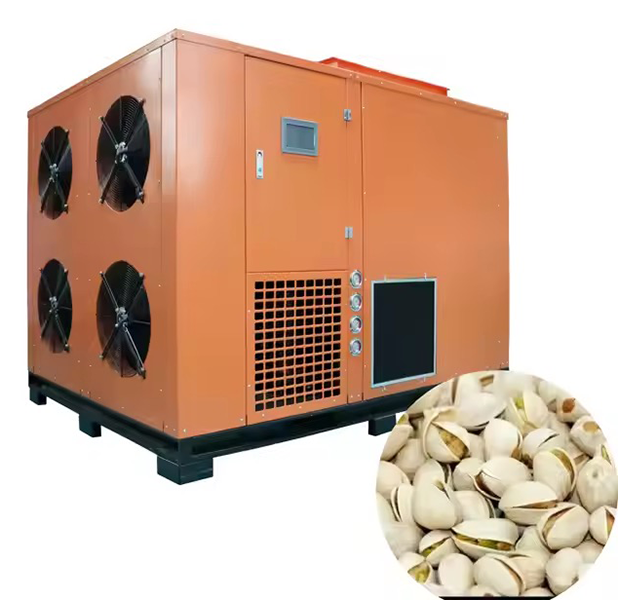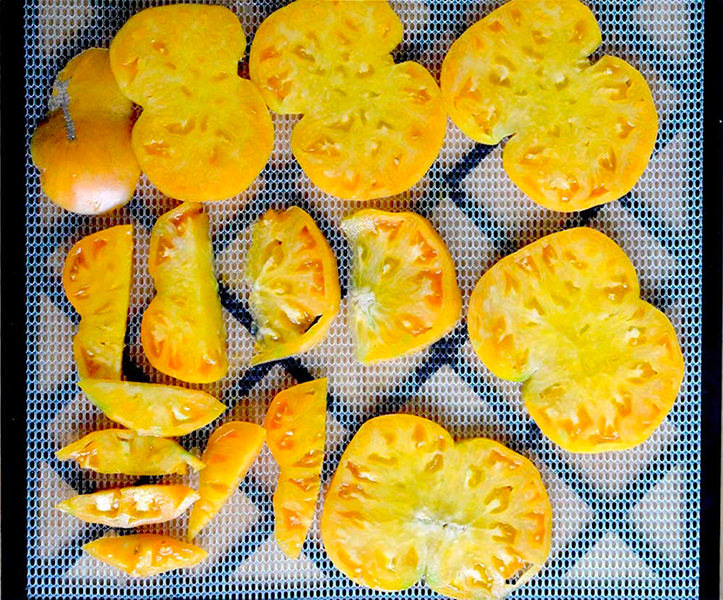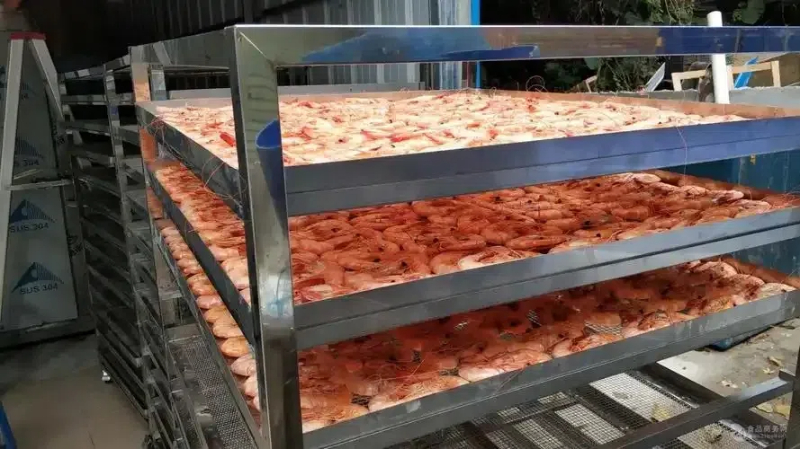
Content Menu
● Understanding Food Dehydrators
>> How Energy Consumption is Measured
● Typical Electricity Usage of Food Dehydrators
● Factors Affecting Electricity Consumption
>> 1. Size and Capacity
>> 2. Power Rating
>> 3. Drying Time
>> 4. Thermostat Control
● Cost Analysis of Running a Food Dehydrator
● Tips for Reducing Energy Consumption
● Benefits of Using Food Dehydrators
>> 1. Nutritional Retention
>> 2. Cost Savings
>> 3. Healthy Snacking
>> 4. Versatility
● Choosing the Right Food Dehydrator
>> 1. Adjustable Temperature Settings
>> 2. Fan Placement
>> 3. Tray Design
>> 4. Ease of Cleaning
● Maintenance Tips for Food Dehydrators
● Environmental Impact of Food Dehydration
● Conclusion
● FAQ
>> 1. Do food dehydrators consume a lot of electricity?
>> 2. How can I calculate the cost of running my dehydrator?
>> 3. What factors affect the energy consumption of a food dehydrator?
>> 4. Is it cheaper to use a dehydrator than an oven?
>> 5. Can I reduce my energy bill while using a food dehydrator?
● Citations:
Food dehydrators are increasingly popular appliances for preserving fruits, vegetables, and meats. They offer a convenient way to create healthy snacks while minimizing food waste. However, many potential users are concerned about the energy consumption and costs associated with running a food dehydrator. This article delves into the electricity usage of food dehydrators, providing insights into their efficiency, costs, and tips for optimal use.

Understanding Food Dehydrators
Food dehydrators work by circulating warm air around food items to remove moisture. This process not only preserves the food but also concentrates flavors and nutrients. The efficiency of a food dehydrator can vary based on several factors, including its wattage, the type of food being dried, and the duration of use.
How Energy Consumption is Measured
Electricity usage for appliances is typically measured in watts (W) or kilowatts (kW). A kilowatt is equal to 1,000 watts. To understand how much electricity a food dehydrator uses, you can calculate its energy consumption using the following formula:
Energy Consumption kWh = Wattage x Hours Used / 1000
For example, if you have a 600-watt dehydrator running for 8 hours, the calculation would be:
Energy Consumption = 600 x 8 / 1000 = 4.8 kWh
Typical Electricity Usage of Food Dehydrators
Most food dehydrators range from 300 watts to 1,000 watts. Here's a breakdown of common wattages and their corresponding costs based on an average electricity rate of $0.12 per kWh:
- 300 watts:
- Cost per hour: 0.3 x 0.12 = $0.036
- 500 watts:
- Cost per hour: 0.5 x 0.12 = $0.06
- 600 watts:
- Cost per hour: 0.6 x 0.12 = $0.072
- 800 watts:
- Cost per hour: 0.8 x 0.12 = $0.096
- 1,000 watts:
- Cost per hour: 1 x 0.12 = $0.12
Factors Affecting Electricity Consumption
Several factors influence how much electricity a food dehydrator uses:
1. Size and Capacity
Larger dehydrators with more trays can process more food at once but may consume more energy overall due to longer drying times.
2. Power Rating
Higher wattage models will consume more electricity in less time compared to lower wattage units.
3. Drying Time
The type of food and its moisture content significantly affect drying times; denser foods require longer drying periods.
4. Thermostat Control
Dehydrators equipped with thermostats can maintain specific temperatures efficiently, reducing unnecessary energy usage.
Cost Analysis of Running a Food Dehydrator
To understand the cost implications fully, consider running your dehydrator for different durations:
- Daily Usage:
If you run a 600-watt dehydrator for 8 hours daily:
Daily Cost = 600 x 8/1000 x 0.12 = $0.576
- Monthly Usage:
If used every day for a month:
Monthly Cost = $0.576 x 30 = $17.28
- Yearly Usage:
For a full year:
Yearly Cost = $17.28 x 12 = $207.36
Tips for Reducing Energy Consumption
To minimize energy costs while using a food dehydrator:
- Use Off-Peak Hours: Run your dehydrator during off-peak electricity hours when rates are lower.
- Batch Dehydrate: Dehydrate larger quantities at once to reduce the frequency of use.
- Optimize Settings: Use the timer and thermostat settings effectively to prevent over-drying and unnecessary energy use.
- Proper Placement: Place your dehydrator in a cool area with good ventilation to enhance efficiency.
Benefits of Using Food Dehydrators
Using a food dehydrator comes with numerous advantages beyond just preserving food:
1. Nutritional Retention
Dehydrating foods helps retain their nutritional value compared to other preservation methods like canning or freezing, which can lead to nutrient loss.
2. Cost Savings
By preserving seasonal fruits and vegetables when they are abundant and inexpensive, users can save money in the long run.
3. Healthy Snacking
Homemade dried snacks allow control over ingredients, avoiding additives and preservatives commonly found in store-bought options.
4. Versatility
Food dehydrators can be used for various foods including fruits, vegetables, herbs, and meats, allowing users to explore diverse culinary options.

Choosing the Right Food Dehydrator
When selecting a food dehydrator, consider the following features:
1. Adjustable Temperature Settings
Different foods require different drying temperatures; look for models that allow you to adjust settings accordingly.
2. Fan Placement
Dehydrators with top or side-mounted fans circulate air more evenly than those with bottom-mounted fans.
3. Tray Design
Consider whether you prefer round or square trays; square trays typically offer more usable space without holes in the middle.
4. Ease of Cleaning
Models that disassemble easily or are dishwasher safe will save time during cleanup.
Maintenance Tips for Food Dehydrators
To ensure longevity and efficiency in your food dehydrator:
- Regularly clean all parts after use to prevent buildup.
- Inspect electrical connections and heating elements periodically.
- Store in a dry place when not in use to avoid moisture accumulation.
- Follow manufacturer guidelines for any specific maintenance requirements.
Environmental Impact of Food Dehydration
The growing trend towards sustainability has led many consumers to consider the environmental impact of their kitchen appliances:
- Food dehydrators often consume less electricity than conventional ovens.
- They contribute to reducing food waste by allowing users to preserve excess produce.
- Many modern models are designed with energy efficiency in mind, helping lower carbon footprints during operation.
Conclusion
Food dehydrators are an excellent investment for those looking to preserve food while enjoying healthy snacks without excessive energy costs. Understanding how much electricity they use can help consumers make informed choices about their usage patterns and costs associated with operation.
By calculating potential expenses based on wattage and duration of use, users can effectively manage their energy consumption while reaping the benefits of home dehydration.

FAQ
1. Do food dehydrators consume a lot of electricity?
No, most food dehydrators consume between 300 to 1,000 watts, which is relatively low compared to other kitchen appliances.
2. How can I calculate the cost of running my dehydrator?
You can calculate it using the formula:
Cost = Wattage x Hours Used /1000 x Cost per kWh
3. What factors affect the energy consumption of a food dehydrator?
Factors include size and capacity, power rating, drying time, and thermostat control settings.
4. Is it cheaper to use a dehydrator than an oven?
Yes, food dehydrators are generally more energy-efficient than ovens for drying foods due to their design and lower operating temperatures.
5. Can I reduce my energy bill while using a food dehydrator?
Yes, by running it during off-peak hours, batch processing foods, and optimizing settings for efficiency.
Citations:
[1] https://scoutingmagazine.org/2013/11/tips-tricks-consider-investing-food-dehydrator/
[2] https://blog.tbrc.info/2024/10/food-dehydrators-market-forecast/
[3] https://farmerswiferambles.com/care-for-your-food-dehydrator/
[4] https://westonbrands.com/weston-dehyrating-tips
[5] https://www.researchandmarkets.com/reports/5741424/food-dehydrators-global-market-report
[6] https://septree.com/blogs/news/do-food-dehydrators-home-commercial-need-regular-maintenance
[7] https://homesteadingfamily.com/preservation-101-intro-to-dehydrating-food/
[8] https://www.gminsights.com/industry-analysis/food-dehydrator-market
[9] https://www.backcountrypaleo.com/cleaning-food-dehydrator/
[10] https://www.webstaurantstore.com/guide/741/food-dehydrators-buying-guide.html











